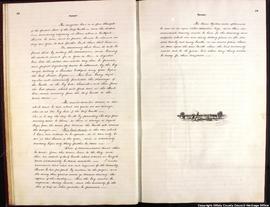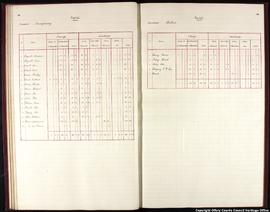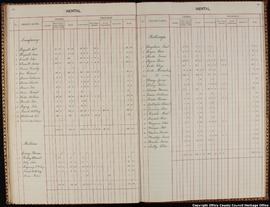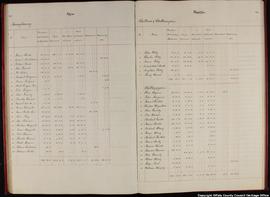- IE OCCHO DIGBY/A/1
- Item
- 1857
Part of Digby Irish Estates
Introductory report submitted by Trench to Lord Digby, following his arrival on the estate on 1 June 1857. He notes that he spent the first three weeks with his son, T. W. Trench, in Tullamore, and assessed the estate on horseback during this period. Report contains a general sketch of the natural features of the estate; the extent of arable pasture, plantations or bog; the issue of rent collection and methods of valuation; and a survey of the woodlands and their ownership. A post script to the report begins on page 48 and contains further commentary on the state and extent of schooling in the area; use of the Union Workhouse; the levels of pauperism and general notes on the cottier class of tenantry. Also includes a list of current leaseholders on the estate.
Trench sketched scenes from life on the estate over the following pages:
Page 6 Sketch of Old Irish Red Deer
Page 10 Sketch of Geashill National School
Page 20 Sketch of Geashill Village
Page 23 Sketch of Derrigunnigan Wood
Page 25 Sketch of Tullamore Road
Page 27 Diagram of bogland to be drained
Page 29 Sketch of Turf Bog Annagharvey depicting two men fighting with sticks.
Page 31 Sketch of Red Deer
Page 33 Sketch of Killeenmore Moors
Trench, William Steuart







